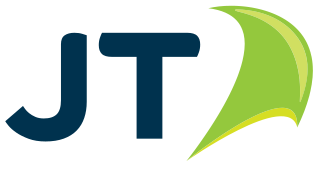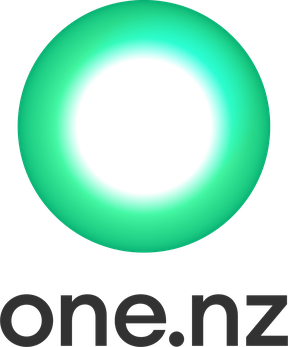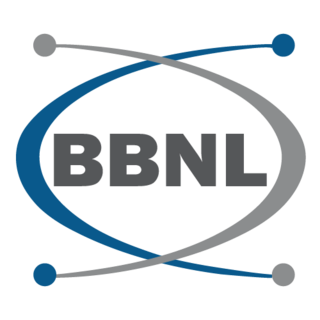Telecommunications in New Zealand are fairly typical for an industrialised country.
Telecommunications in the United Kingdom have evolved from the early days of the telegraph to modern broadband and mobile phone networks with Internet services.

Spark New Zealand Limited is a New Zealand telecommunications and digital services company providing fixed-line telephone services, mobile phone services, broadband, and digital technology services including cloud, security, digital transformation, and managed services. Its customers range from consumers to small - medium business, government agencies and large enterprise clients. It was formerly known as Telecom New Zealand until it was rebranded to Spark in 2014. It has operated as a publicly traded company since 1990. Spark's mobile network reaches 98% of New Zealand, with over 2.5 million mobile connections and 704,000 broadband connections

JT Group Limited is the parent company of several subsidiaries including Jersey Telecom Limited and Wave Telecom Limited. Jersey Telecom is the former monopoly operator in the Bailiwick of Jersey. JT provides telecommunications, Internet access and other services, mostly within the Channel Islands.
KCOM Group is a UK communications and IT services provider. Its headquarters are in the city of Kingston upon Hull, and it serves local residents and businesses with Internet and telephony services. It was listed on the London Stock Exchange but is now privately owned by Macquarie Group.

One New Zealand Group Limited, stylised as One NZ, is a New Zealand telecommunications company. One NZ is the largest wireless carrier in New Zealand, accounting for 38% of the country's mobile share market in 2021.

TelstraClear Limited was New Zealand's second-largest telecommunications company before being acquired by Vodafone New Zealand in October 2012, previous to which it was a subsidiary of Australian company Telstra.
Openreach Limited is a company wholly owned by BT Group plc, that maintains the telephone cables, ducts, cabinets and exchanges that connect nearly all homes and businesses in the United Kingdom to various national broadband and telephone networks. It was established in 2006 following an agreement between BT and the UK's telecoms regulator, Ofcom, to implement certain undertakings, pursuant to the Enterprise Act 2002, to ensure that rival telecom operators have equality of access to BT's local network.
Internet access is widely available in New Zealand, with 94% of New Zealanders having access to the internet as of January 2021. It first became accessible to university students in the country in 1989. As of June 2018, there are 1,867,000 broadband connections, of which 1,524,000 are residential and 361,000 are business or government.

Vocus Group Limited, formerly known as Vocus Communications, is an international telecommunications company headquartered in North Sydney, Australia. Founded by James Spenceley as a wholesale, business, government and consumer telecommunications provider, Vocus owns and manages Australia's second largest intercapital fibre network. Vocus provides retail, wholesale and corporate telecommunications services across Australia and New Zealand. Vocus offers data network services such as Internet, dark fibre, IP WAN, unified communications and telephony and cloud services to mid, large and corporate businesses direct and also acts as a wholesaler. The company owns and operates 18 data centres across Australia and New Zealand and has an onshore network operations centre run by the engineers who built the network.
Christchurch City Holdings Ltd (CCHL) is a wholly owned investment arm of the Christchurch City Council. The council controlled trading organisations (CCTO) own and run some of the important infrastructure in Christchurch, such as the public transport and electricity delivery in the city.

The XT Network was a brand name for a UMTS and LTE mobile network run by Spark New Zealand . The network was initially built nationwide on WCDMA/UMTS 850 MHz, with 2100 MHz infill in major urban areas. The UMTS network is HSPA+ enabled, with a maximum downlink transmission rate of 21.1 Mbit/s and an uplink rate of 5.2 Mbit/s attainable for capable hardware. HSPA+ has a theoretical maximum of 56 Mbit/s download speed and 22 Mbit/s upload speed. Then under Spark 4G LTE is being built out. The network is not 2G capable, Telecom never operated a public GSM network.

2degrees is a New Zealand telecommunications provider. Its mobile network launched on 4 August 2009 after nine years of planning. 2degrees offers prepaid and pay-monthly mobile services, as well as fixed-line phone and broadband services. 2degrees is the third-largest wireless carrier in New Zealand, with 1.3 million subscribers as of July 2015.
The Ultra-Fast Broadband initiative is a New Zealand Government programme of building fibre-to-the-home networks covering 87% of the population by the end of 2022. It is a public–private partnership of the government with four companies with total government investment of NZ$1.5 billion.

The National Broadband Network (NBN) is an Australian national wholesale open-access data network. It includes wired and radio communication components rolled out and operated by NBN Co, a government-owned corporation. Internet service providers, known under NBN as retail service providers or RSPs, contract with NBN to access the data network and sell fixed Internet access to end users.

BharatNet, also known as Bharat Broadband Network Limited (BBNL), is a central public sector undertaking, set up by the Department of Telecommunications, a department under Ministry of Communications of the Government of India for the establishment, management, and operation of the National Optical Fibre Network to provide a minimum of 100 Mbit/s broadband connectivity to all 250,000-gram panchayats in the country, covering nearly 625,000 villages, by improving the middle layer of nation-wide broadband internet in India to achieve the goal of Digital India.
Chorus is a provider of telecommunications infrastructure throughout New Zealand. It is listed on the NZX stock exchange and is in the NZX 50 Index. The company owns the majority of telephone lines and exchange equipment in New Zealand; and was responsible for building approximately 70% of the country's fibre-optic UFB network, receiving a government subsidy of $929 million to do so.

Antony Thomas Gough is a New Zealand businessman and property developer based in Christchurch. The grandson of Tracy Thomas Gough, who founded Gough, Gough and Hamer, Gough is considered to be one of the city's most influential businessmen. He is the developer of The Terrace, a major commercial development in Christchurch's retail district and part of the city's reconstruction programme following the 2011 earthquake.

CityFibre is an independent British telecommunications network provider, providing gigabit-capable FTTP broadband across the UK. It is the third-largest network provider in the UK, after Openreach and Virgin Media. It is considered one of the UK's "altnets", in reference to being an alternative to Openreach.












